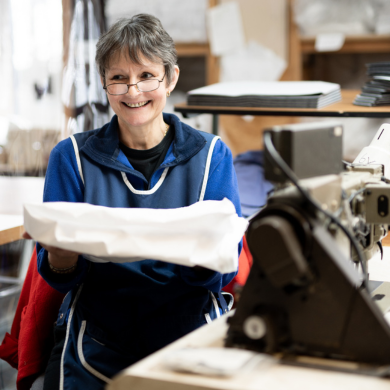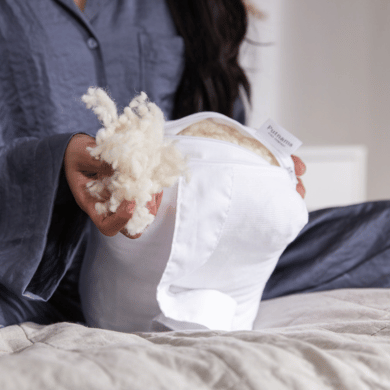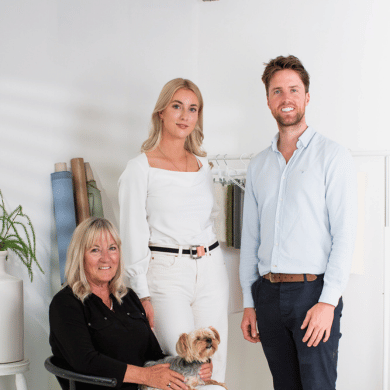
Bedding Solutions for CPAP Users: Sleep Comfortably, Breathe Freely
Managing sleep apnoea with a CPAP (Continuous Positive Airway Pressure) machine can be life-changing for many. But while CPAP therapy enhances your breathing during sleep, staying comfortable all night long can be a tricky challenge.
Traditional bedding and pillows often aren’t CPAP-friendly, leading to disrupted sleep and frustrating nights.
The solution?
Specialised bedding designed with CPAP users in mind.
This comprehensive guide will walk you through the challenges CPAP users face, essential bedding options, and how to choose the best setup for you. Plus, we’ll highlight tips for maintenance and include helpful product recommendations loved by sleep apnoea sufferers.
Putnams Memory Foam Advanced CPAP Pillow Sleep ApnoeaMy Darling wife has MND and she struggles to get comfortable at night using her nippy machine . This pillow is working well and we have passed on the details to NHS support as it could help others. - George S
Why Comfort is Key for CPAP Success
CPAP machines are vital tools for treating obstructive sleep apnoea, ensuring uninterrupted breathing throughout the night. However, their success largely depends on user compliance, which can be impacted by discomfort. Many CPAP users report issues such as masks dislodging during sleep, neck or shoulder pain, or bulky hoses becoming entangled in traditional bedding.
Comfortable, tailored sleeping setups don’t just make it easier to stick to CPAP therapy, they also ensure better-quality rest, leaving you refreshed and ready to take on the day.
That’s where the right bedding solutions make all the difference.
Useful read - NHS Guide to Your CPAP
Challenges of Using Traditional Bedding with CPAP Machines
Sleep apnoea sufferers and CPAP users often face issues that regular bedding isn’t designed to address, such as:
- Mask Displacement: Standard pillows can push against CPAP masks, shifting them or causing leaks.
- Restricted Sleeping Positions: Some pillows don’t support the flexibility CPAP users need for side or stomach sleeping.
- Neck and Shoulder Strain: Poor alignment from standard bedding can exacerbate aches and pains, impacting sleep quality.
A specialised setup can help overcome these problems, creating a sleep environment tailored to your unique needs.
See also - The Expert's Handbook to Understanding and Managing Sleep Apnoea
Bedding Essentials for CPAP Users
1. CPAP-Friendly Pillows for CPAP users
The right pillow is at the heart of any CPAP-friendly setup. CPAP pillows are specifically designed with unique contours and cutouts to accommodate your mask and hoses, enabling you to sleep comfortably on your side, back, or even in combination positions.
- Side Sleeper Pillows for CPAP
Side sleeper pillows for CPAP users can be beneficial like the Putnams Advanced CPAP Pillow Sleep Apnoea , which features cutouts to prevent mask pressure and tube dislodgement.
- Wedge Pillows for Sleep Apnoea
Wedge pillows, such as the Putnam Bed Wedges, elevate the upper body, helping to keep the airway open for improved airflow during sleep.
- Memory Foam Options
Products like the Putnams Memory Foam Advanced CPAP Pillow Sleep Apnoea allow for flexibity of loft or firmness, ensuring optimal alignment for neck and spine support.
See also - Choosing the Right Organic Pillow for Sleep Apnoea Relief
2. Mattresses for Optimal Support
While your CPAP machine does the heavy lifting for your breathing, don’t underestimate the role of your mattress in supporting your physical comfort. Look for mattresses with medium-firm support that encourage spinal alignment, which is especially important for sleep apnoea sufferers.
Some popular choices include hybrid mattresses with memory foam layers to minimise pressure points or adjustable beds that allow users to elevate their head effortlessly, mimicking the benefits of a wedge pillow.
3. Breathable Linens
CPAP users should also consider their bedding materials. Natural, breathable fabrics like cotton or wool can regulate temperature and keep you cool, especially when paired with CPAP machines, which sometimes cause warming sensations.
How to Choose the Perfect Setup for Comfort and Efficiency
Here are the key factors to consider when choosing bedding tailored to CPAP therapy:
Understand Your Sleeping Position
Your sleep position plays a huge role in the gear you’ll need.
For example, side sleepers may opt for pillows with side cutouts to prevent mask interference, whereas back sleepers might benefit more from support-focused cervical pillows.
Prioritise Mask Accommodation
Your pillow should offer space for your specific CPAP mask and hose, preventing drag or pressure that could cause leaks. Nasal pillow users typically have fewer restrictions, while full-face mask wearers may require deeper cutouts or contours.
Factor in Budget and Long-Term Use
While high-quality CPAP pillows or mattresses may seem like an investment, they’re worth the cost for long-term comfort and improved sleep adherence.
See also - Sleep Apnoea Myths Debunked: Separating Fact from Fiction
Tips for Maintaining CPAP Bedding
To extend the life of your bedding - and maintain hygiene - follow these maintenance tips for CPAP-friendly bedding:
- Wash Covers Regularly
Machine-wash removable pillow and mattress covers weekly to prevent the buildup of oils, dirt, and bacteria.
- Spot Clean Memory Foam
Foam pillows shouldn’t be submerged in water; instead, spot-clean areas with mild detergent when required.
- Rotate or Dry Bedding Thoroughly
Hot and humid environments can lead to mould or odour issues, so ensure your bedding is properly aired out and rotated every few weeks.
Testimonials from Real CPAP Users
Invest in Your Sleep Today
Sleep apnoea sufferers know how vital it is to balance therapy with comfort.
Investing in CPAP-specific bedding solutions can significantly improve adherence, comfort, and the quality of your rest each night.
Explore our recommended products and discover how they can help you sleep better, feel better, and make the most of your therapy.
A better night's sleep is waiting for you!
















Leave a comment